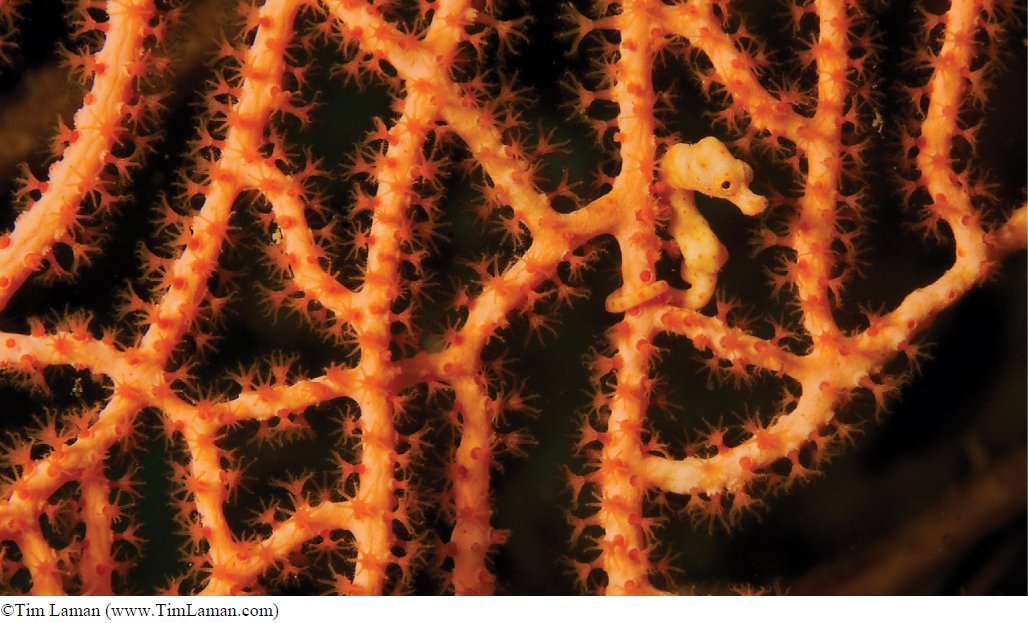
“It is indeed remarkable that this theory [evolution] has been progressively accepted by researchers, following a series of discoveries in various fields of knowledge. The convergence, neither sought nor fabricated, of the results of work that was conducted independently is in itself a significant argument in favor of this theory.”
— POPE JOHN PAUL II, 1996
In the 150 or so years since Darwin first published The Origin of Species, thousands of studies have been conducted on his theory of evolution by natural selection, both in the laboratory and in natural habitats. A wide range of modern methodologies has also been developed—
In the remainder of the chapter we review the five primary lines of evidence demonstrating the occurrence of evolution:
- 1. The fossil record—physical evidence of organisms that lived in the past
- 2. Biogeography—patterns in the geographic distribution of living organisms
- 3. Comparative anatomy and embryology—growth, development, and body structures of major groups of organisms
- 4. Molecular biology—examination of life at the level of individual molecules
- 5. Laboratory and field studies—implementation of the scientific method to observe and study evolutionary mechanisms
The first of the five lines of evidence is the fossil record. Although it has been central to much documentation of the occurrence of evolution, it is a very incomplete record. After all, the soft parts of an organism tend to decay rapidly and completely after death. And there are only a few environments (such as tree resin, tar pits, the bottom of deep lakes, and continental shelves) in which the processes of erosion and decomposition are so reduced that an organism’s hard parts, including bones, teeth, and shells, can be preserved for thousands or even millions of years. These remains, called fossils, can be used to reconstruct what organisms must have looked like long ago. Such reconstructions often provide a clear record of evolutionary change, including unique insights into the patterns and processes of history (FIGURE 8-32).

The use of radiometric dating helps in painting a clearer picture of organisms’ evolutionary history by telling us the age of the rock in which a fossil is found (FIGURE 8-33). In Darwin’s time, it was assumed that the deeper in the earth a fossil was found, the older it was. Radiometric dating goes a step farther, making it possible to determine not just the relative age of fossils but also their absolute, numerical age. This is accomplished by evaluating the amounts of certain radioactive isotopes present in the fossil-

349
Radiometric dating confirms that the earth is very old. Rocks more than 3.8 billion years old have been found on all of the earth’s continents, with the oldest so far found in northwestern Canada. By using the radioactive isotope uranium-
Paleontologists must deal with the fact, however, that fossilization is an exceedingly unlikely event, and when it does occur, it represents only those organisms that (1) happened to live in that particular area, (2) could be preserved under certain chemical conditions, and (3) had physical structures that can leave fossils. For this reason, the fossil record is unavoidably incomplete. Entire groups of organisms have left no fossil record at all, and for others the record has numerous gaps. Still, for what there is, the fossil record can be incredibly detailed and interesting, and fossils have been found that link all of the major groups of vertebrates.
The evolutionary history of horses is among the most well-

350
The fossil record provides another valuable piece of evidence for evolution, in the form of fossils with transitional features. These are fossils that demonstrate a link between groups of species thought to have shared a common ancestor. One such fossil is Tiktaalik (FIGURE 8-35). First found in northern Canada and estimated to be 375 million years old, Tiktaalik fossils seem to represent a transitional phase between lobe-

TAKE-HOME MESSAGE 8.18
Radiometric dating confirms that the earth is very old and allows scientists to determine the age of fossils. By analyzing fossil remains, paleontologists can reconstruct what organisms looked like long ago, learn how organisms were related to each other, and understand how groups of organisms evolved over time.
Tiktaalik is a “missing link” between fish and land animals. What features of this creature are fish-
Tiktaalik had gills, scales, and fins like a fish, but also possessed arm-like joints and could drag itself across the land.
351